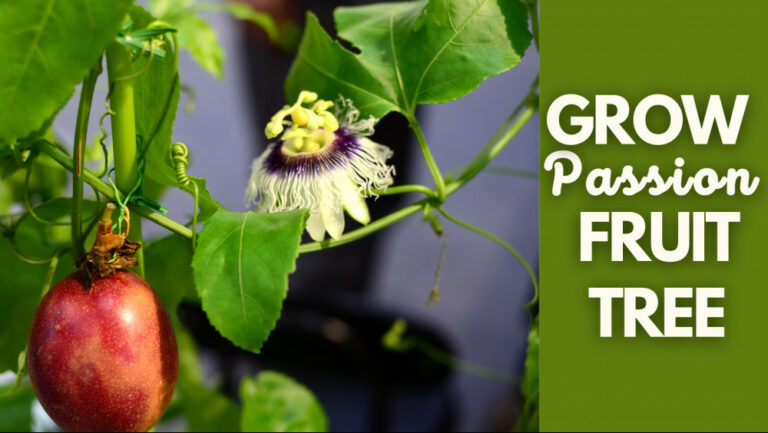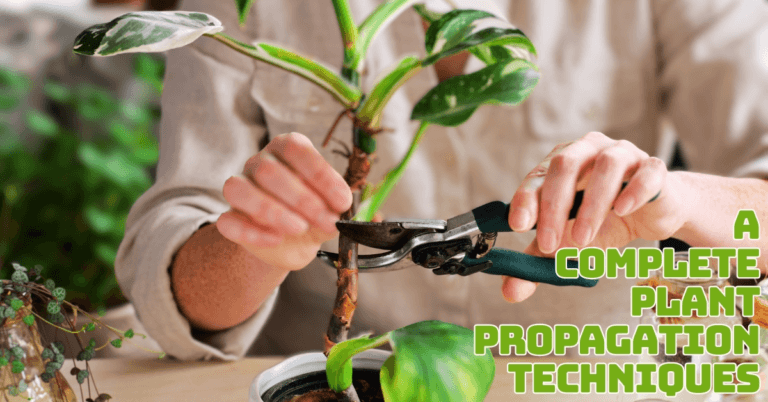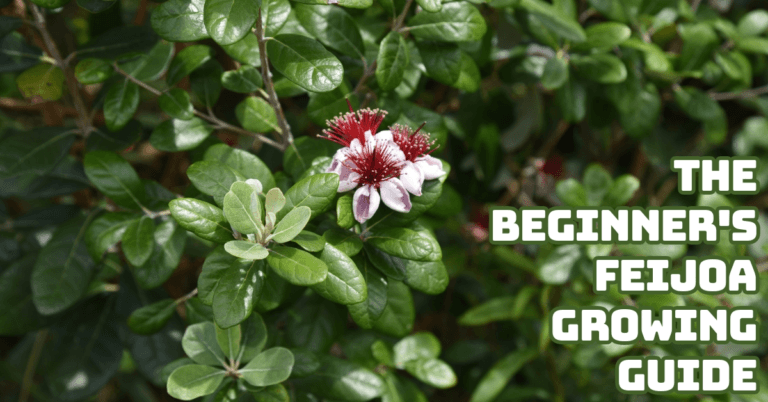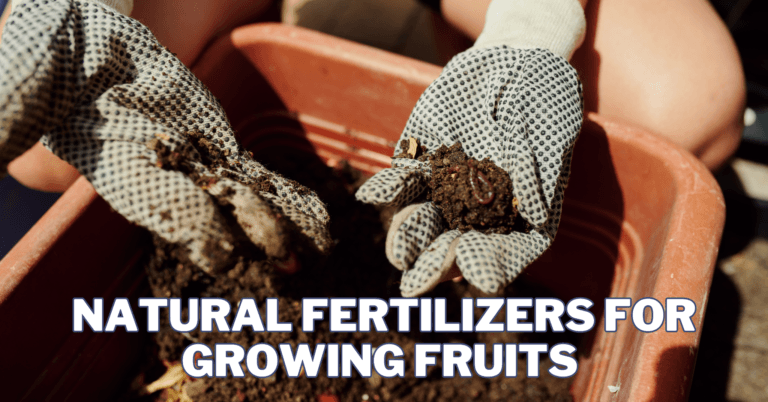Grow Fast-Growing Vegetables From Seeds Like A Pro
If you’re eager to see quick results in your garden, choosing the right plants makes all the difference. Some vegetables grow at an impressive speed, letting you enjoy fresh harvests sooner than you’d expect.
Whether you’re a beginner or a seasoned gardener, this guide will help you pick the best options. Discover how planting fast-growing vegetables from seeds can give you a thriving, productive garden in less time.
Fast-Growing Vegetables From Seeds
1. Radish — Quickest Root Crop (USDA Zones 2-10)
Radishes are among the fastest-growing vegetables, maturing within 25-30 days from seed. Sow seeds directly into well-drained soil, half an inch deep, with about 1 inch of spacing.
They germinate quickly—usually within 3-5 days—and thrive in cool weather, making spring and fall ideal seasons. Radishes perform best at 50-65°F in USDA zones 2-10.
They prefer full sun but tolerate partial shade. Thin seedlings early to prevent crowding, which ensures round, crisp roots.
Water regularly to avoid woody texture. For a continuous harvest, sow every two weeks. Harvest when roots reach about 1 inch in diameter for peak flavour.
2. Leaf Lettuce — Perfect For Baby Greens (USDA Zones 3-10)
Leaf lettuce is a fast-growing, cool-weather vegetable ready for harvest in about 30-45 days. Sow seeds directly into rich, moist soil, only ¼ inch deep and thinly scattered or spaced an inch apart.
Ideal temperatures are 45-70°F, making spring and fall the best planting seasons in USDA zones 3-10. Lettuce requires consistent moisture to prevent bitterness and thrives in full sun to partial shade.
Harvest outer leaves as needed to encourage new growth. Successive planting every two weeks can ensure a steady supply of fresh greens. Avoid planting in hot weather, as lettuce tends to bolt in the heat.
3. Spinach — Nutritious & Fast (USDA Zones 3-9)
Spinach matures quickly, typically ready for harvest within 30-40 days. Sow seeds directly into the soil about half an inch deep and thin seedlings to 3 inches apart for ample space.
Spinach germinates in 7-14 days and prefers cool temperatures between 50-70°F, thriving in spring or fall in USDA zones 3-9.
It grows best in full sun but tolerates partial shade, especially in warmer climates. Keep soil consistently moist and rich in organic matter.
Harvest outer leaves first to encourage continuous growth. Succession sowing every few weeks prolongs the harvest season and ensures a steady supply of fresh leaves.
4. Arugula — Peppery & Quick (USDA Zones 3-9)
Arugula is a fast-growing leafy green that matures in 30-40 days. Sow seeds ¼ inch deep, spacing them an inch apart in fertile, moist soil.
Germination takes about 5-7 days. Best grown in cooler seasons—spring or fall—arugula thrives in USDA zones 3-9, especially when temperatures range from 45-65°F.
It enjoys full sun but tolerates light shade. Water regularly to promote tender leaves and prevent bolting. Harvest young leaves for a milder flavour or let them mature for a stronger, peppery taste.
To extend the harvest, sow every two weeks. Arugula grows well in garden beds, raised beds, or containers.
5. Green Onions — Year-Round Favourite (USDA Zones 3-10)
Green onions are a versatile, fast-growing vegetable harvested in 30-40 days. Sow seeds directly into the soil, ¼ inch deep and 1 inch apart, in rows spaced 12 inches apart.
They germinate in about 7-10 days and grow best in full sun with fertile, well-drained soil. Ideal for USDA zones 3-10, they perform well in spring through fall with temperatures around 55-75°F.
Keep the soil moist and harvest when the green tops are about 6-8 inches tall. You can snip the tops and allow regrowth or pull the entire plant. Perfect for containers, succession planting ensures a continuous supply of fresh scallions.
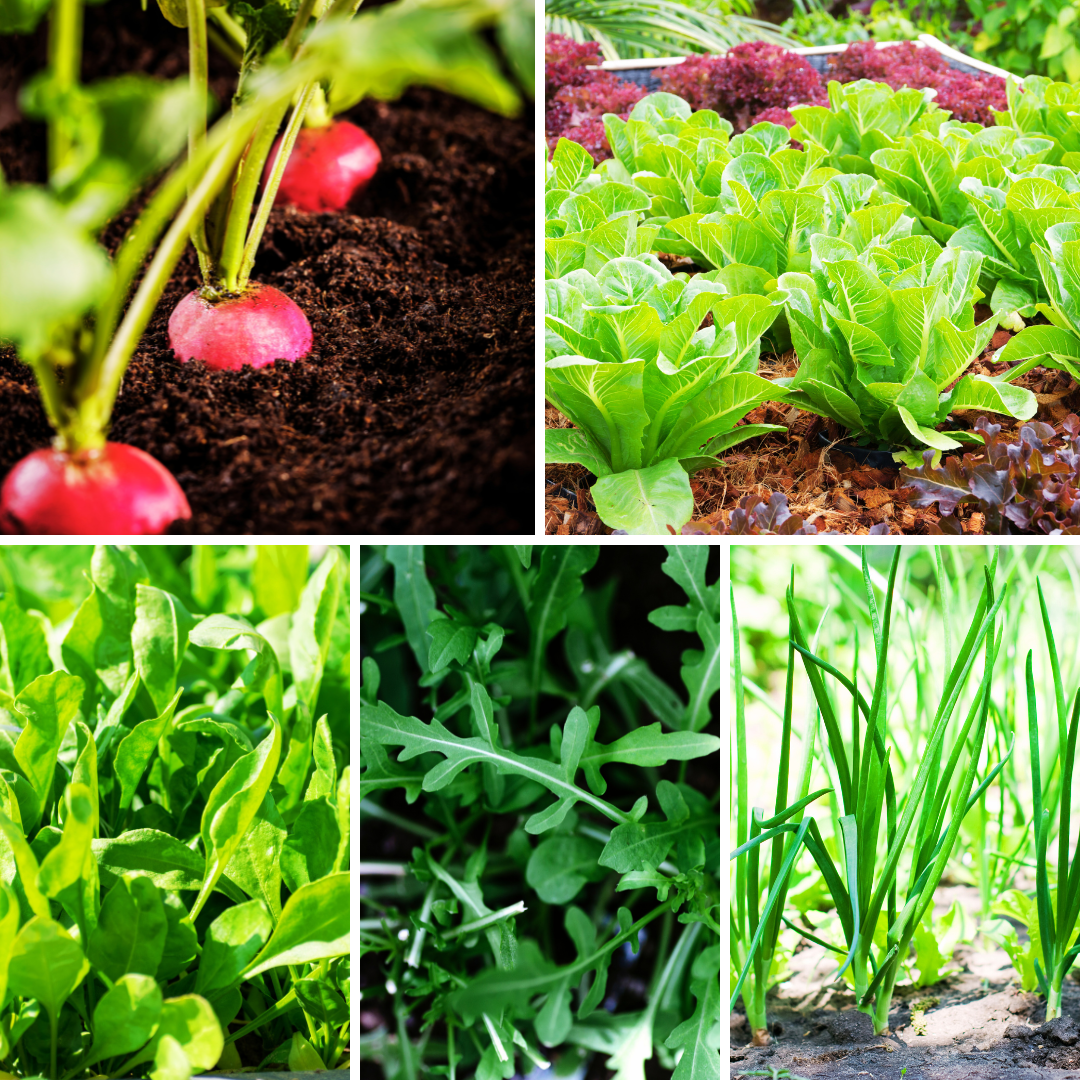
6. Baby Carrots — Sweet & Snackable (USDA Zones 3-10)
Baby carrots mature quickly, typically within 50-60 days. Sow seeds directly into loose, well-tilled soil, ¼ inch deep and about 1-2 inches apart.
Thin seedlings to avoid crowding, which encourages straight root growth. Best grown in spring or fall, they thrive in cool temperatures between 55-75°F across USDA zones 3-10.
Full sun promotes robust growth, though partial shade is acceptable. Keep soil consistently moist for tender, flavorful roots. Raised beds or deep containers work exceptionally well.
Harvest when roots are about 3-4 inches long. Succession planting every three weeks will provide a steady harvest of these delicious, bite-sized treats.
7. Bush Beans — Quick Harvest & No Trellis Needed (USDA Zones 3-10)
Bush beans are reliable, fast growers that mature within 50-60 days. Direct sow seeds 1 inch deep, 2-3 inches apart, in rows spaced 18 inches apart.
Beans thrive in USDA zones 3-10 during warm weather, ideally between 70-85°F. They require full sun and well-drained, fertile soil. Germination occurs within 7-10 days.
Regular watering is essential, particularly during flowering and pod development. Unlike pole beans, bush varieties do not need trellising.
Harvest young pods when they’re crisp and before seeds bulge inside for the best flavour. Regular picking encourages continuous production. Succession planting every three weeks ensures a prolonged harvest.
8. Zucchini — Abundant Summer Crop (USDA Zones 3-9)
Zucchini is a prolific, fast-growing vegetable, typically harvestable within 50-60 days. Sow seeds directly into the soil 1 inch deep and 3 feet apart in mounds or rows after the last frost date.
Thriving in USDA zones 3-9, zucchini needs warm temperatures around 70°F and full sun. Germination happens within 5-10 days. Rich, well-drained soil and consistent watering ensure healthy growth.
Harvest zucchinis when they reach 6-8 inches for tender fruits. Pick frequently to promote continuous production.
Zucchini grows well in garden beds or large containers. Mulching helps retain moisture and prevents weeds, making maintenance easier for abundant harvests.
9. Cucumbers — Crisp & Refreshing (USDA Zones 4-11)
Cucumbers are quick to mature, usually ready in 50-60 days. Sow seeds 1 inch deep, spacing 12 inches apart, after the soil has warmed above 65°F.
Best grown in USDA zones 4-11, cucumbers prefer full sun and temperatures between 70-90°F. Germination takes 5-10 days. Choose fertile, well-drained soil and keep it moist throughout the season.
Provide trellises for vining types to save space and improve air circulation. Harvest when fruits are firm and before they overgrow for the best flavour.
Frequent picking encourages more fruit. Suitable for garden beds or containers, cucumbers flourish with regular care and warm conditions.
10. Turnips — Dual Harvest Of Roots & Greens (USDA Zones 3-9)
Turnips are versatile, offering both edible roots and greens, with roots maturing in 45-60 days. Sow seeds directly into the ground ½ inch deep and 2 inches apart.
Ideal for USDA zones 3-9, they grow best in cooler seasons—spring or fall—when temperatures range from 40-75°F. Germination occurs within 5-7 days. Provide full sun and fertile, loose soil.
Keep the soil consistently moist to avoid woody roots. Harvest greens at about 30 days and roots once they reach 2-3 inches in diameter. Turnips are excellent for succession planting and perform well in raised beds or open garden spaces.
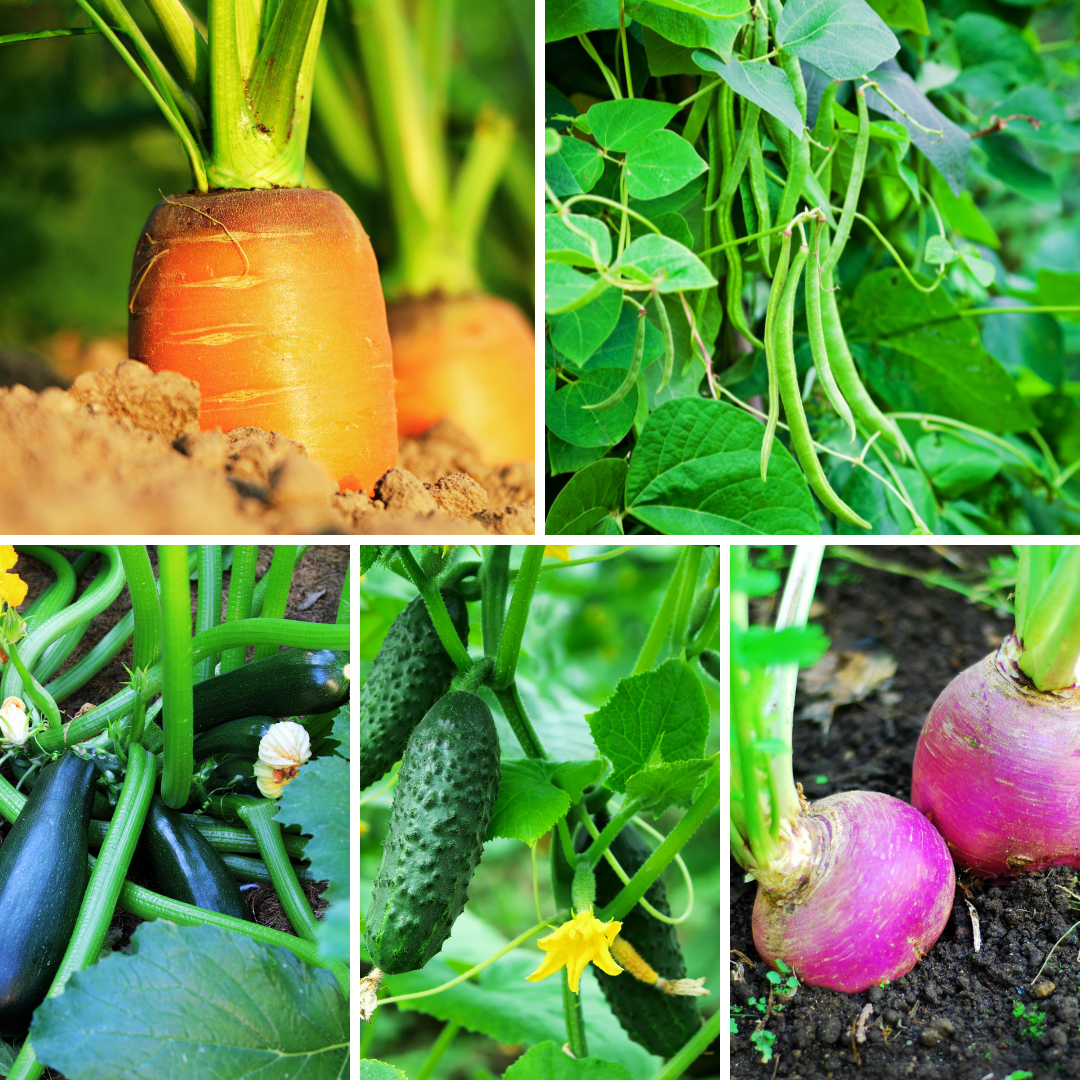
11. Mustard Greens — Quick & Spicy Leafy Green (USDA Zones 6-10)
Mustard greens grow rapidly, ready for harvest in 30-50 days. Direct sow seeds ¼ inch deep, 6 inches apart, in rows spaced 18 inches apart.
They flourish in USDA zones 6-10, especially in cool seasons with temperatures between 50-75°F. Germination occurs within 4-7 days.
Mustard greens prefer full sun but tolerate partial shade, thriving in fertile, moist soil. Harvest baby leaves at around 30 days or wait for mature leaves.
Continuous harvesting encourages ongoing production. Watch for bolting in warmer weather and plant early or late in the season. Mustard greens are great for garden beds or containers.
12. Swiss Chard — Bright, Nutritious, & Fast-Growing (USDA Zones 3-10)
Swiss chard is a colourful, fast-growing leafy green, ready in 50-60 days. Sow seeds ½ inch deep and 6 inches apart in rows spaced 18 inches apart.
Germination takes 7-14 days. Suitable for USDA zones 3-10, Swiss chard grows best in spring or fall when temperatures are 50-85°F. It prefers full sun but tolerates partial shade.
Fertile, well-drained soil and consistent watering promote lush leaves. Harvest young leaves in 30 days or mature ones later by cutting the outer leaves.
Continuous picking stimulates more growth. Chard withstands light frost and performs well in garden beds or large containers.
Turn Your Passion for Nature Into Income
🌿 Whether you love gardening, caring for animals, or exploring holistic living,
You can share your knowledge online and earn from it.
Discover how nature lovers are growing their passions into meaningful, income-generating blogs. 👇
13. Beets — Dual-Purpose Crop for Roots & Greens (USDA Zones 2-10)
Beets grow quickly and offer dual harvests—tender roots and leafy greens. Sow seeds ½ inch deep, spacing 2 inches apart, and thin to 3-4 inches apart after germination.
Beets thrive in USDA zones 2-10 during cool seasons with temperatures between 50-70°F. Germination occurs within 5-12 days. Full sun and fertile, well-drained soil support healthy growth.
Water consistently for tender roots. Harvest greens at 30 days and roots at 50-60 days when they reach about 2 inches in diameter.
Beets are excellent for succession planting and grow well in raised beds or containers. Avoid planting in hot weather.
14. Kale — Hardy & Continuous Producer (USDA Zones 4-10)
Kale is a nutrient-rich, fast-growing green harvested in 30-60 days. Sow seeds directly ½ inch deep and 12 inches apart. Ideal for USDA zones 4-10, kale grows best in cool seasons when temperatures are between 45-75°F.
Germination takes 5-10 days. Full sun and fertile, moist soil encourage vigorous leaf growth. Harvest young leaves around 30 days or wait for mature leaves at 60 days.
Continuous harvesting of outer leaves promotes new growth. Kale tolerates light frost, which enhances its sweetness. Perfect for succession planting, kale grows well in garden beds, raised beds, or containers.
15. Bok Choy — Crisp Asian Green (USDA Zones 4-9)
Pak Choi matures quickly, usually within 45-50 days. Sow seeds ¼ inch deep, spacing 6 inches apart, in fertile, moist soil. Germination occurs within 5-7 days.
Best grown in USDA zones 4-9, Pak Choi thrives in cool seasons—spring or fall—with ideal temperatures between 50-70°F. It requires full sun to partial shade.
Keep the soil consistently moist to prevent bolting. Harvest young leaves at 30 days or full heads when mature. Mulching helps retain moisture and regulate soil temperature.
Suitable for garden beds, raised beds, or containers, Pak Choi offers a crunchy, flavorful addition to your vegetable garden.
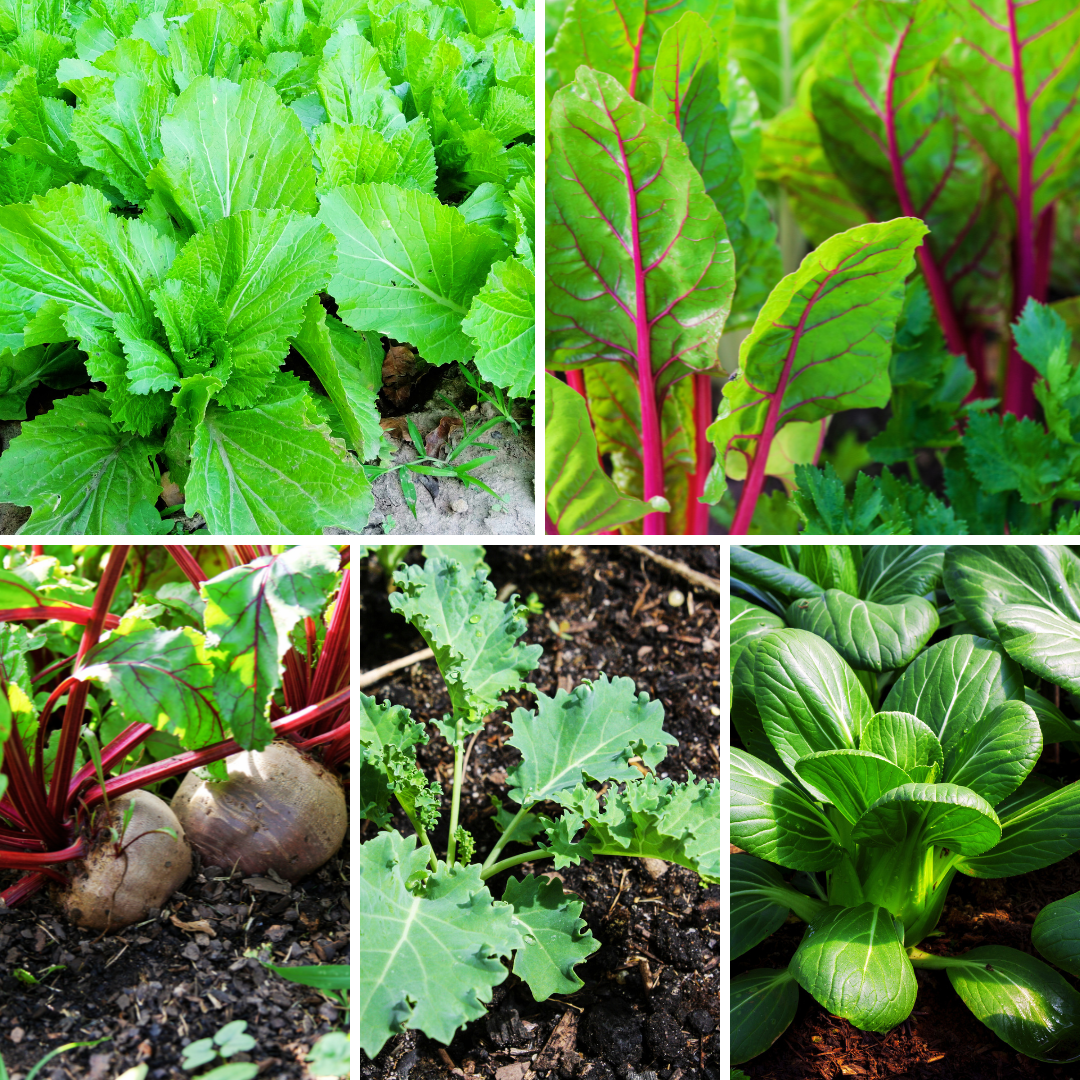
Tips For Success With Fast-Growing Vegetables
Growing fast-growing vegetables from seeds lets you enjoy fresh harvests quickly. With simple care, the right season, and proper techniques, you’ll have a thriving, productive garden in no time.
1. Choose The Right Season For Each Crop
Fast-growing vegetables thrive when planted in their ideal season. Cool-season crops like spinach, radish, and lettuce prefer spring or fall, while warm-season plants like zucchini and bush beans need late spring or summer warmth.
Planting in the correct season reduces the risk of bolting or poor growth. Always check the seed packet for recommended sowing times based on your USDA hardiness zone, ensuring healthy plants and maximum yields within the shortest growing period possible.
2. Start With High-Quality Seeds
Using fresh, high-quality seeds significantly boosts germination rates and overall plant health. Old or poorly stored seeds may fail to sprout or result in weak plants.
Purchase seeds from reputable sources and store leftovers in a cool, dry place. Always check the expiration date and look for varieties specifically marked as quick-growing.
Investing in certified organic or heirloom seeds also ensures better taste, vigour, and disease resistance, giving your garden the best possible start from seed.
3. Prepare Loose, Fertile Soil Before Planting
Soil preparation is key for fast-growing vegetables. Loosen the soil to promote root growth and good drainage, removing rocks and debris that could hinder development.
Mix in compost or aged manure to enrich fertility and enhance soil texture. A slightly acidic to neutral pH (6.0-7.0) suits most vegetables.
Well-prepared soil encourages strong roots, fast germination, and vigorous plant growth, making it easier for your crops to reach maturity quickly and produce a healthy, abundant harvest.
4. Give Plants Adequate Space By Thinning
Crowded plants compete for nutrients, water, and sunlight, slowing growth and reducing yields. Always thin seedlings according to the recommended spacing on seed packets.
Thinning ensures each plant gets enough resources to grow quickly and healthily. Overcrowding can also encourage disease and pest infestations.
It may seem harsh to remove healthy seedlings, but giving each plant enough room is critical for achieving the rapid development and maximum harvest that fast-growing vegetable varieties are known for.
5. Water Consistently To Support Rapid Growth
Fast-growing vegetables need a steady water supply for healthy, vigorous growth. Inconsistent watering can cause problems like bolting, cracked roots, or bitter-tasting leaves.
Aim for evenly moist soil, avoiding both waterlogging and drought stress. Mulching around plants helps retain moisture and prevents rapid drying. Check soil moisture regularly, especially during hot or windy weather.
Drip irrigation or soaker hoses are effective ways to deliver water directly to the roots without wasting resources or encouraging fungal diseases.
6. Ensure Full Sun Exposure Whenever Possible
Most fast-growing vegetables thrive with at least six hours of direct sunlight daily. Sunlight drives photosynthesis, which fuels rapid growth and healthy development.
Choose the sunniest spots in your garden or balcony for planting. If you have limited light, prioritize leafy greens that tolerate partial shade.
Proper sun exposure not only accelerates growth but also improves flavour, colour, and disease resistance. Monitor your planting area throughout the day to ensure your vegetables get the sunlight they need.
7. Practice Succession Planting For Continuous Harvest
Succession planting means sowing new seeds every few weeks to keep a steady harvest throughout the growing season. This method is especially useful for fast-growing vegetables like lettuce, radish, and spinach that mature quickly.
As you harvest one batch, the next is already sprouting. It helps avoid feast-or-famine situations in your garden and maximizes space use.
By staggering plantings, you’ll enjoy fresh produce longer, making your garden more productive and rewarding with minimal extra effort.
8. Use Mulch To Retain Moisture And Suppress Weeds
Mulching helps regulate soil temperature, conserve moisture, and prevent weed growth—factors essential for healthy, fast-growing vegetables.
Apply organic mulch, such as straw, compost, or grass clippings, around your plants after seedlings emerge. Mulch prevents soil from drying out quickly and reduces competition from weeds.
It also helps maintain even soil moisture, critical for consistent growth. Mulching can even reduce soil erosion and nutrient loss, making it a smart, low-maintenance way to boost your garden’s productivity.
9. Control Pests Naturally To Protect Young Plants
Fast-growing vegetables are vulnerable to pests that can stunt growth or destroy crops. Implement natural pest control methods like companion planting, introducing beneficial insects (like ladybugs), or using organic sprays such as neem oil.
Regularly inspect plants for signs of damage or infestation. Early detection is key to preventing outbreaks. Avoid harsh chemicals, which can harm beneficial insects and soil health. Maintaining a healthy, balanced ecosystem in your garden helps protect your fast-growing veggies naturally.
10. Harvest On Time To Maximize Flavour And Yields
Fast-growing vegetables often taste best when harvested young and tender. Waiting too long can lead to tough textures, bitterness, or reduced production.
Regularly check your plants and pick at the right stage—radishes when crisp, lettuce before bolting, and beans while pods are slender.
Timely harvesting also encourages continued growth in many plants. Keeping up with harvesting ensures you enjoy the best flavours and textures your garden can offer, while also making room for new crops to thrive.
Conclusion
With the proper care and choices, your garden can yield fresh produce in no time. By planting fast-growing vegetables from seeds, you’ll enjoy a rewarding gardening experience and quick harvests. Start today and make the most of every growing season with these easy, productive crops that thrive fast and strong.
I trust you enjoyed this article on Grow Fast-Growing Vegetables From Seeds Like A Pro. Please stay tuned for more inspiring guides, helpful tips, and ideas to help you live closer to nature every day.
Take care!
— JeannetteZ
💬 Your Opinion Is Important To Me
Do you have thoughts, ideas, or questions? I’d love to hear from you. Please leave your comments below or email me directly at Jeannette@Close-To-Nature.org.
📚 More Nature-Inspired Reads
Explore more ways to connect with nature, nurture your pets, and live in harmony with the world around you 🌿


